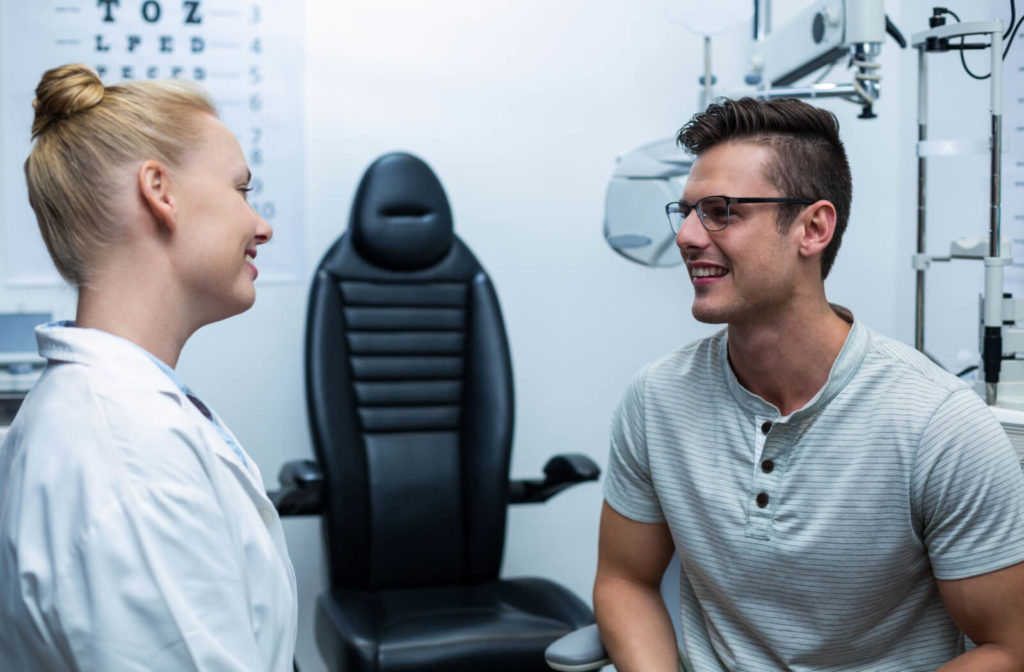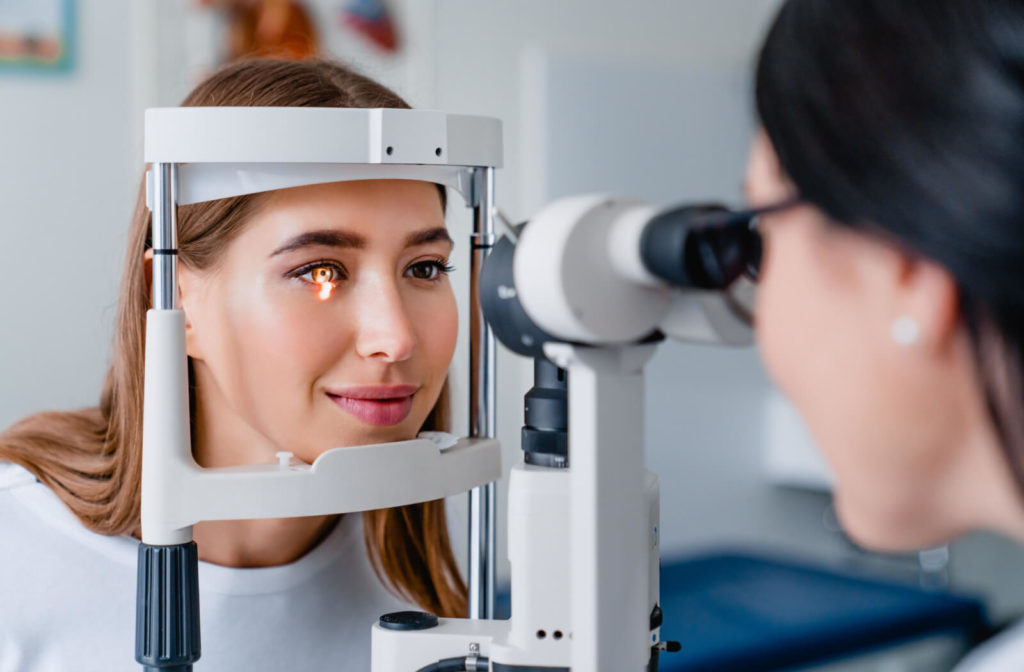Eye exams are essential for protecting your eye health and vision. They help your eye doctor assess your sight and diagnose eye problems as early as possible. While they play a significant role in managing eye health, eye exam costs can be a stressor for many patients.
Knowing the average cost of an eye exam can help you plan for your next appointment.
Eye Exam Costs Can Vary
It can be hard to know the cost of an average eye exam in Ontario because every clinic can set its prices depending on the specific services they offer. However, most practices will have similar fees to stay competitive with each other. In Ontario an eye exam can range between $140 and $250, depending on location and coverage. It’s important to check the cost of an eye exam when booking your appointment, and make sure you have any applicable insurance documents.
Don’t expect your eye exam to cost pocket change, but know that you have options for coverage through private insurance or OHIP.
Look Into OHIP Coverage
The Ontario Health Insurance Plan (OHIP) helps cover necessary medical costs for residents. OHIP can help with the cost of eye exams as long as you are eligible.
Eye exam cover under OHIP is as follows:
- Children 19 and under are eligible for one major eye exam every 12 months
- Adults 20 to 64 have a covered eye exam every 12 months if they have an eligible medical condition
- Healthy adults 65 and older are eligible for a major eye exam every 18 months even without a diagnosed medical condition
Employer Extended Coverage
Many employer’s extended healthcare insurance plans include coverage for one eye exam every two years. Check with your employer or insurance company to see exactly how much and how often they will cover.
Don’t Skip Regular Eye Exams
Regular eye exams are crucial for maintaining healthy eyes and optimal vision. Even if your vision seems perfect, you can still be developing eye problems only an optometrist can detect.
Besides assessing your vision, these eye exams can help your eye doctor identify underlying eye conditions that could significantly damage your vision, including:
With routine eye exams, these issues can be diagnosed and treated as early as possible. Your eye doctor can help keep your vision working at its best.
How Often Do You Need an Eye Exam?
Many patients wonder how often they need an eye exam, and the answer is that every patient is different—your age and eye health can determine how frequently you need an eye exam.
According to the Canadian Association of Optometrists, adults aged 20 to 39 should have an eye exam at least every 2–3 years. Adults 40 to 64 should have an eye exam every 2 years, while adults 65 and older should have an annual eye exam. If you have an increased risk of eye conditions because of conditions like diabetes, your optometrist can help determine an ideal exam frequency for your needs.
What Can You Expect During Your Eye Exam?
During the exam, the optometrist will assess your vision and check for early warning signs of eye diseases or other health issues. The beginning of your eye exam typically involves reviewing your medical history, including your family history, lifestyle, and previous health issues to learn more about your unique needs.
Your optometrist completes many diagnostic tests during your eye exam—some of them include:
- Visual acuity: Visual acuity helps determine how well you can see from different distances. Your eye doctor typically tests this using an eye chart to help diagnose refractive errors like myopia, hyperopia, and astigmatism.
- Pupil response: A pupil response test helps assess how well your pupils react to light and moving objects. Issues affecting the pupil can damage your vision, making early diagnosis crucial for protecting your sight.
- Refraction: Refraction is a test for determining the lens power needed in your glasses. Your eye doctor has you look through a phoropter to see which lens helps you see most clearly.
- Visual field test: A visual field test helps determine your peripheral vision, and how well you can see out of the corners of your eye. Assessing peripheral vision can help identify conditions like age-related macular degeneration.
- Slit lamp exam: During a slit lamp examination, your eye doctor uses a microscope to look at the eye’s internal structures. Looking at the inner workings of the eye can help diagnose eye disease as early as possible.
- Tonometry: Tonometry helps measure your eye’s intraocular pressure (IOP). Measuring IOP can help determine your risk of glaucoma.
- Retinal exam: A retinal exam helps your eye doctor diagnose conditions affecting the retina at the back of your eye.
- Cover test: Cover tests assess how your eyes work together, helping diagnose conditions like strabismus or amblyopia.

Book Your Next Eye Exam
Eye exams aren’t always cheap, but your vision is priceless. Thankfully, insurance or OHIP can often cover some or all of your exam costs. Don’t let price prevent you from protecting your eye health and vision.
Contact Mint Eyecare when it’s time for your next eye exam.




